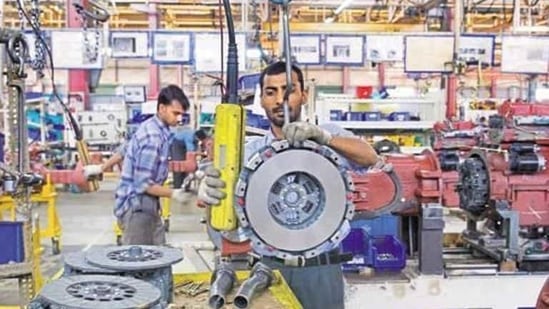How govt plans to push health spending to target of GDP’s 2%
Despite decades of strong economic growth, the country’s spending on health care is barely 1% of GDP, way below Brics peer nations, resulting in serious supply-side deficits of facilities and professionals.
India’s official policymakers have long recognised that spending on public health care ought to be at least 2% of gross domestic product (GDP), first proposed by the 11th five-year plan (2007-12), but the country has been struggling to spend even less than half of it.

The NK Singh-led 15th Finance Commission (FC)’s recommendations on health, accepted by the Union government in its action-taken report, have called for many first-time financial and non-financial measures to re-prioritise public health expenditure to reach a targeted 2.5% of gross domestic product by 2025.
Despite decades of strong economic growth, the country’s spending on health care is barely 1% of GDP, way below Brics peer nations, resulting in serious supply-side deficits of facilities and professionals.
According to the Rural Health Survey 2018-19, there is an 85.6% shortfall of surgeons, 75% deficit of obstetricians and gynaecologists, 87.2% of physicians, and 79.9% shortfall of paediatricians in the primary health sector in rural areas.
Based on the recommendations of the 15th FC, a significant portion of federal health care grants will for the first time be routed through urban local bodies, or municipalities, and, at the rural level, through panchayats, the government’s action-taken report shows.
The grants for the health sector have been divided into two parts. One, grants worth ₹70,051 crore meant exclusively for local governments (municipalities and panchayats). Two, sectoral grants aggregating to ₹31,755 crore for the states.
Also, during the 15th FC’s award period (2021-26), unconditional grants-in-aid for health care alone will work out to 0.1% of GDP for the first time. The target of 2% of GDP for provisioning public health care was first proposed by the 11th five-year plan (2007-12). The target was reiterated by the National Health Policy 2017. Yet, total expenditure on health was just 0.96% in 2018-19.
In another first, the 15th FC has reserved a majority of health grants for the primary sector. “We recommend that primary health care should be the number one commitment of each and every state and that primary health expenditure should be increased to two-thirds of total health expenditure by 2022,” the commission’s report stated.
“The total grants-in-aid support to the health sector over the award period works out to ₹1,06,606 crore which is 10.3% of the total grants in aid recommended by us. This forms about 0.1% of gross domestic product. The grants for the health sector will be unconditional,” the commission’s report said.
The commission has calculated that states should allocate 8% of their annual budgets to achieve the overall spending target.
For critical-care hospitals, the 15th FC has recommended ₹15,265 crore. This includes ₹13,367 crore for general states, and ₹1,898 crore for North-east states.
Given regional disparities, the commission devised an innovative “per capita health expenditure distance method”, similar to the income distance method, to award the shares.
To decide on a state’s share of resources, finance commissions usually rely on parameters such as income distance, population size, geographical location and forest cover, etc, which are then assigned weightages. Income distance is the difference between average per capita incomes and the per capita income of an individual state in question. It gives the most direct measure of how rich or poor a state is.
The grants states will receive on the basis of this innovative “expenditure distance” formula will be sufficient to cover the full capital cost of building 205 hundred-bed hospitals and 157 fifty-bed hospitals, according to the 15th FC report.
“The recommendations are revolutionary and, if implemented, will revolutionise the sector because of the focus on primary health care,” said Dr Dorairaj Prabhakaran, vice-president, research and policy, at the Public Health Foundation of India.
However, Prabhakaran said the large disparities in capacities of states could still be a stumbling block. “Some better-placed states will definitely implement, utilise and add to the funds while less developed states may return some of the funds unutilised, as seen in the past,” he said.
Stay informed on Business News, TCS Q4 Results Live along with Gold Rates Today, India News and other related updates on Hindustan Times Website and APPs




